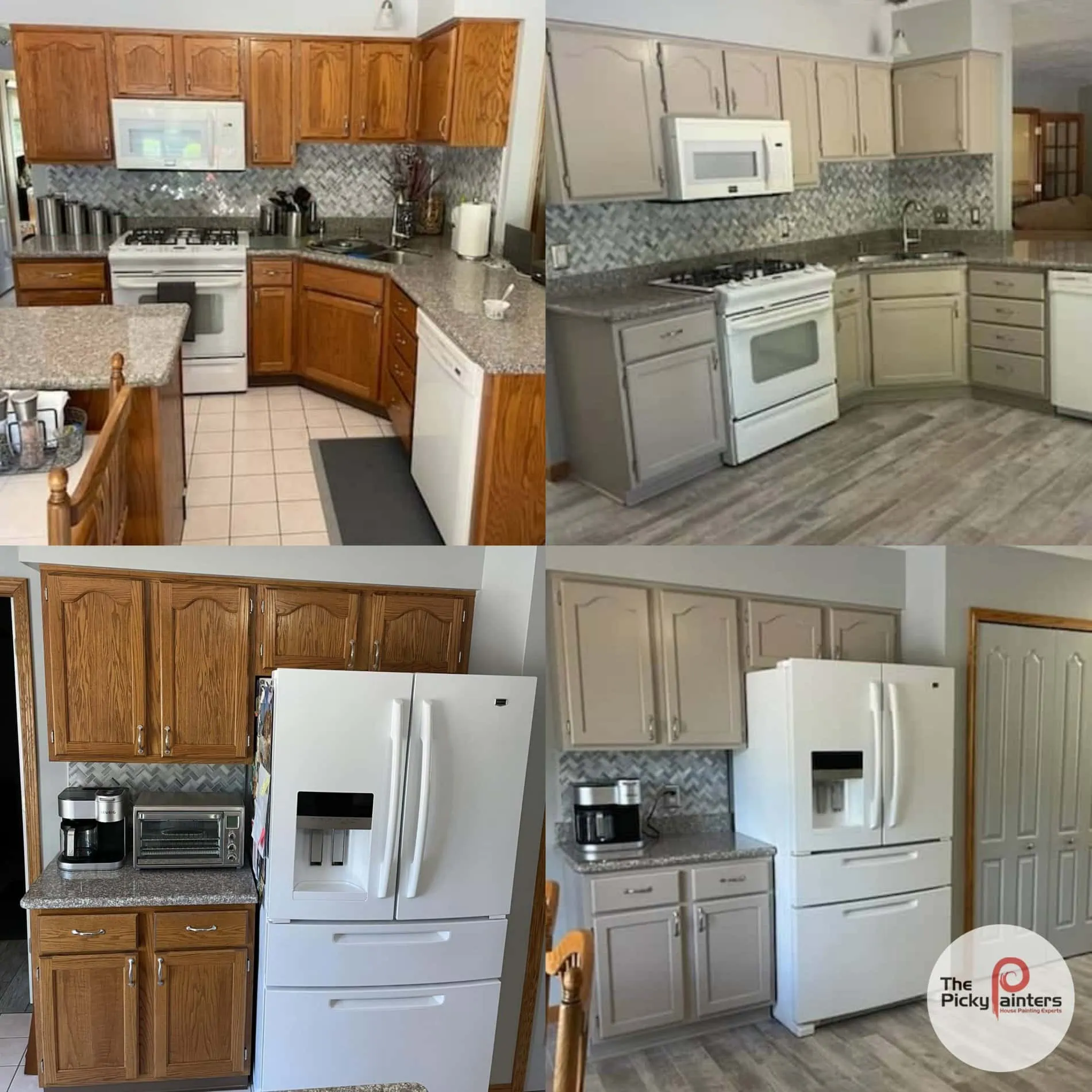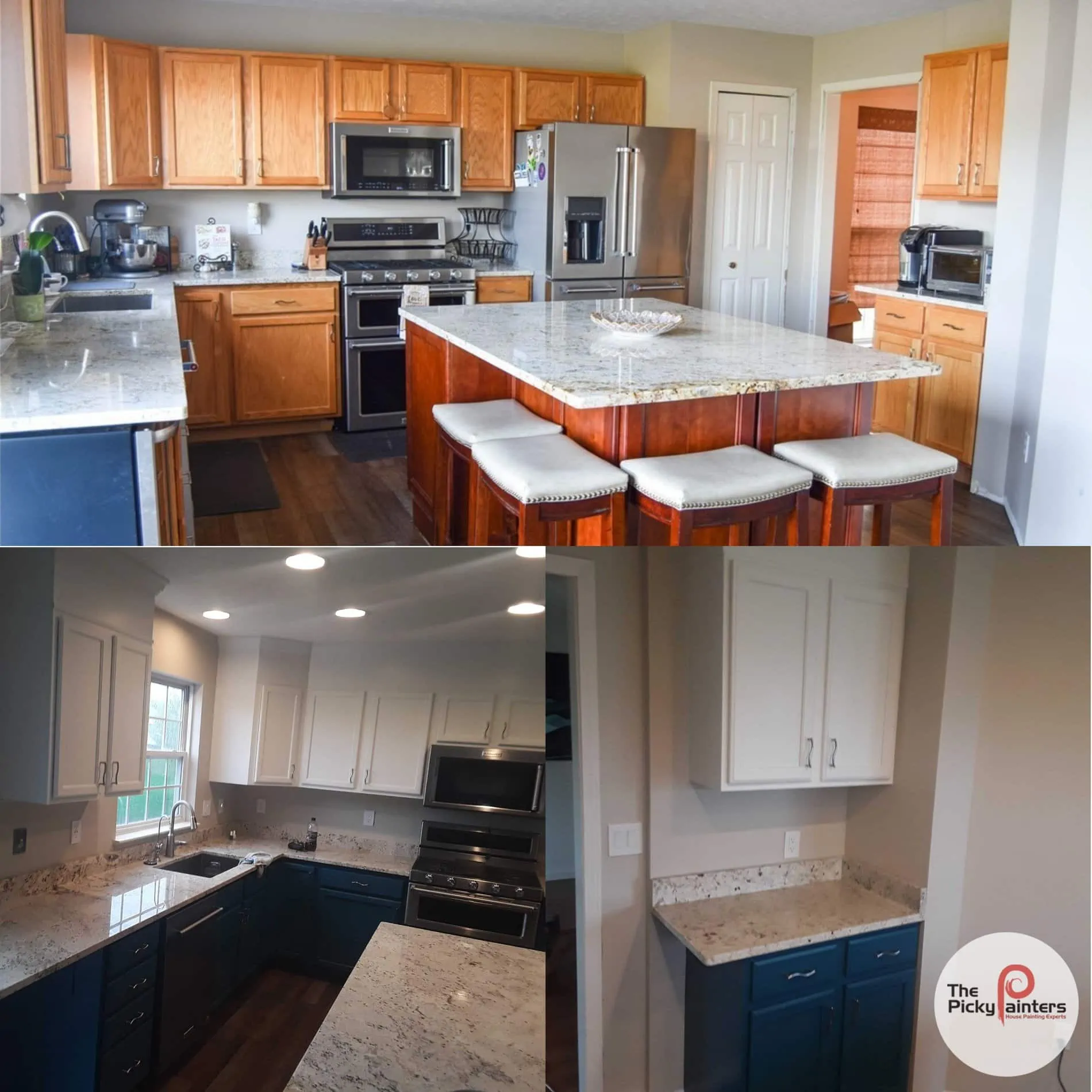
Paint Colors That Go With Oak Cabinets
January 10, 2023
Oil-Based Paint Vs. Water-Based Paint: What’s The Difference?
April 22, 2023Oak kitchen cabinets are easily stained. They are frequently exposed to dirt and oil from food preparations that leave behind dust, sticky fingers, and food particles. Because the accumulation makes your cabinets look dull over time, it’s a good idea to clean them frequently.
Cabinet cleaning can be done with commercial cleansers. You can also create your own eco-friendly, cost-efficient cleaning products with components from your kitchen. This article will give tips on cleaning your oak kitchen cabinets using commercial products or features already available in your home.
Tips to Keep Oak Kitchen Cabinets Clean
Use Vinegar Solution or Mild Soap
Combine one cup of water and one cup of white vinegar. For routine usage on oak cabinets, this gentle cleaning solution is ideal. The wood won’t warp, or the finish won’t peel off. If you dislike using vinegar for cleaning, try a mild soap solution. Add a cup of water and a teaspoon of dish soap to the sink.
Avoid cleaning your cabinets with all-purpose solid cleaners. They might result in warping and discoloration.
Oil Soap, Wood Cleaner
Oil soap eliminates oil and other caked-on contaminants without harming oak surfaces. When you want to clean your cabinets thoroughly, it’s an excellent product to keep on hand because it’s more potent than vinegar or a simple dish soap solution.
Apply light pressure and a circular motion as you apply the oil soap on the cabinets with a delicate cloth. Use a clean cloth to re-clean the cabinets. To ensure that the surface of your cabinets is spotless, remove all residue from the grease and oil cleanser.
Baking Soda
Food spills that go neglected for an extended period can harden and be quite challenging to clean up. Baking soda’s gentle abrasive action will eliminate the dried substance, protecting your wood from damage. Prepare a thick paste by combining baking soda and water. Scrub the caked-on stuff off by dipping a cloth in the paste.
If the substance is still resistant to removal, utilize the paste and allow it to sit for 15 minutes before scrubbing it away. You can scrape off the stuff using a thin spatula or another utensil.
Furniture Polish or Wax
A cleaned cabinet exterior will add warmth and glamor to your kitchen by bringing out the wood’s natural character. Pick the polish that best complements your kitchen style because most polishes either leave a high shine or a low luster.
The exterior of the cabinet should be polished in spots. Work in four- or five-inch portions for the cabinets’ entire surface to be polished evenly. Gently circle-rub the polish.
Whatever cleaner you use, the basic procedures for cleaning kitchen cabinets remain the same:
Always Clean the Outside of Cabinets After Cooking
Grease and food crumbs can build up on cabinet surfaces whenever you cook. Apply the vinegar solution to a clean washcloth or cleaning rag, then use it to wipe down the cabinet doors and the area beneath the cabinets. Use a moist, but not dripping, cloth by rubbing it out.
Don’t Forget the Inside of the Cabinets
The inside of your cabinets should be cleaned every few weeks to prevent spills from occurring from the spices and other foods you store there. Use some mild vinegar or soapy water to clean the cabinets. After drying the cabinets with a fresh towel, place everything back on the shelves.
Keep the Cabinets Clean by Dusting Them Regularly
Use a soft, dry cloth to wipe off the cabinet’s inner and external surfaces if there is a light dust buildup. Cooking causes steam and grease, which cake the dust onto cabinet surfaces and make it more difficult to remove if you only clean them occasionally.
Planning to Upgrade Your Oak Kitchen Cabinets?
Keep your wood cabinets if they are too beat-up, chipped, stained, or otherwise damaged to appear presentable before considering a cabinet refinishing. The Picky Painters may help you save money by replacing the cabinet fronts on your cabinets or by removing the finish from your current cabinets. We will refinish them and can give them a fresh appearance. We are located in Cleveland, Ohio.
Visit our official website: https://thepickypainters.com/.





